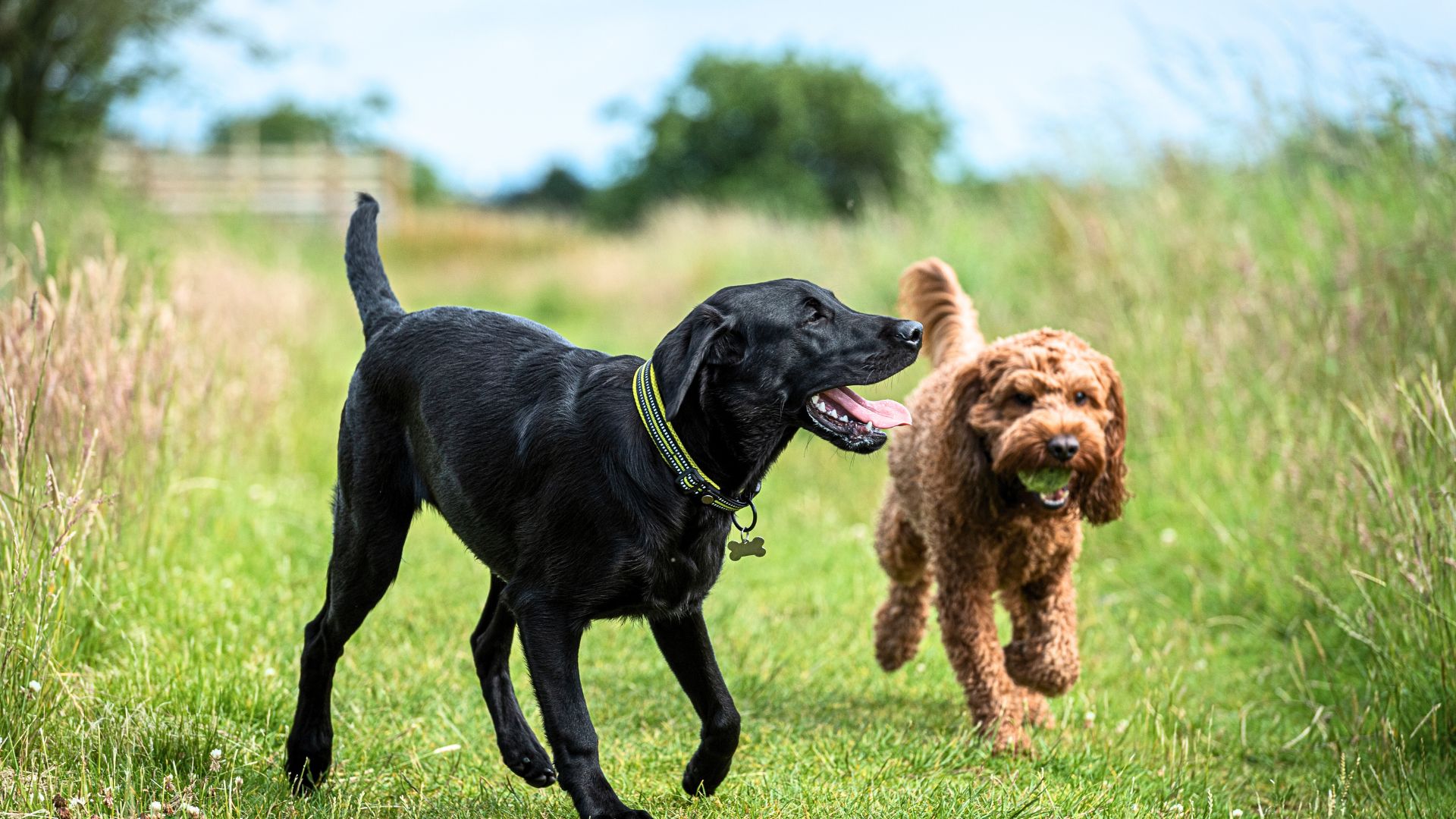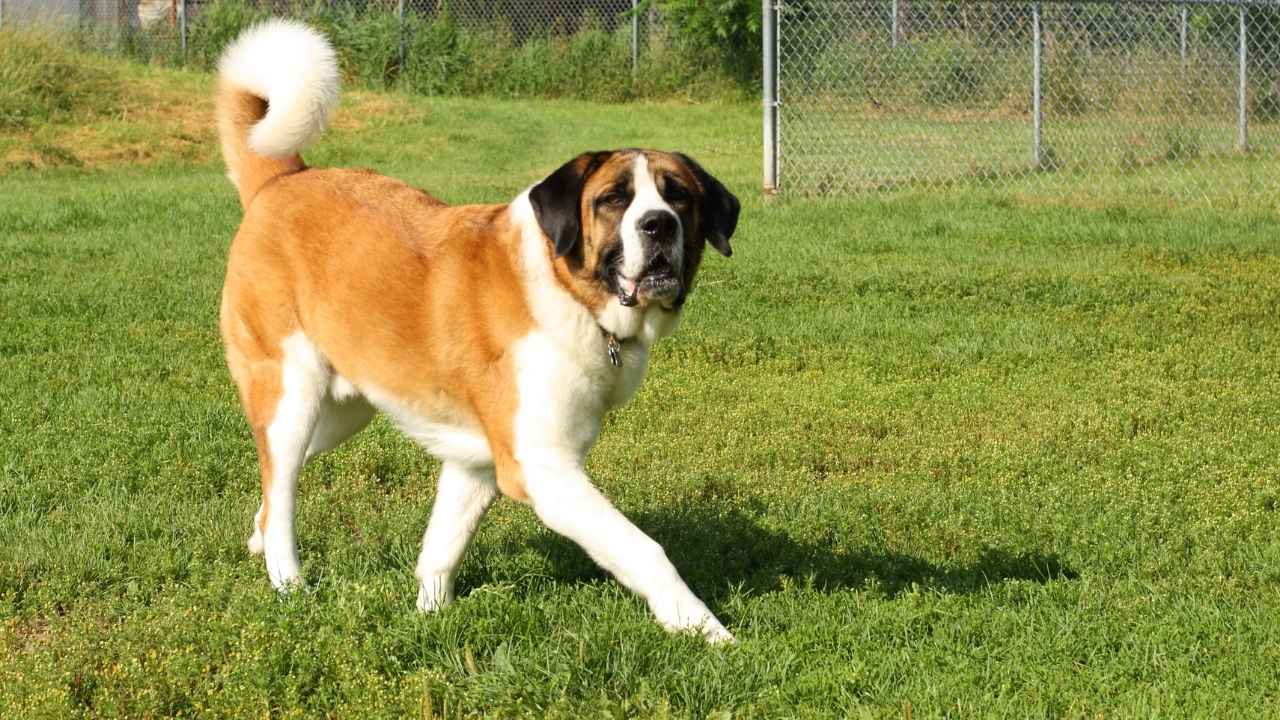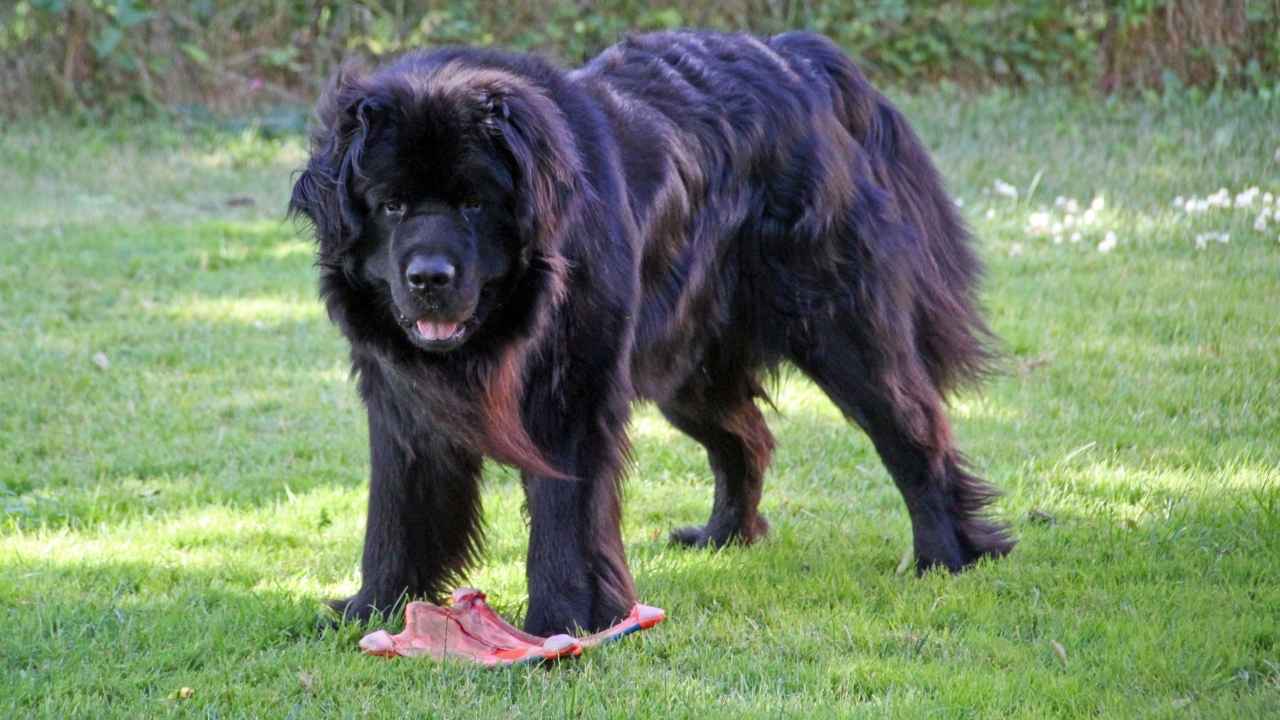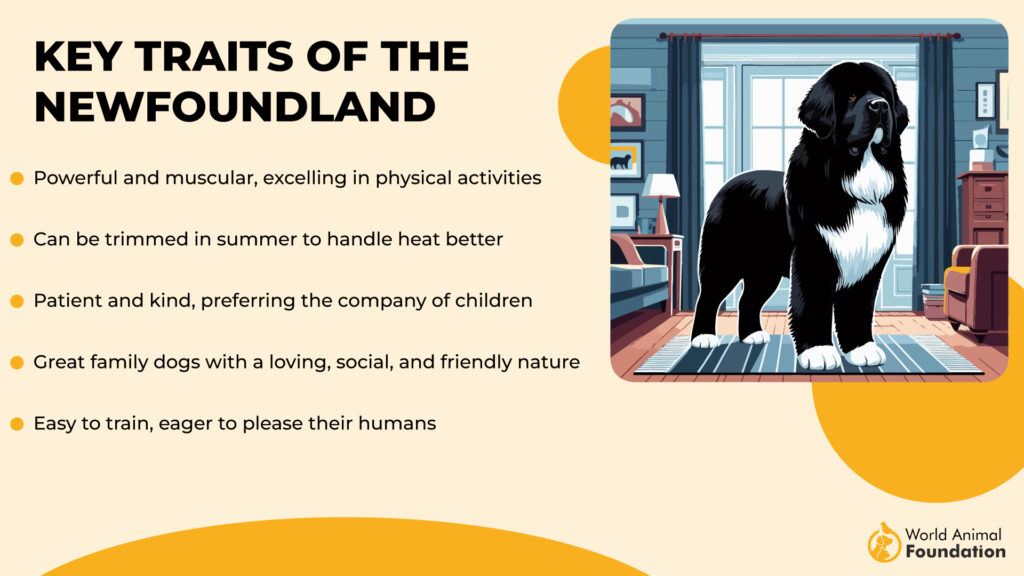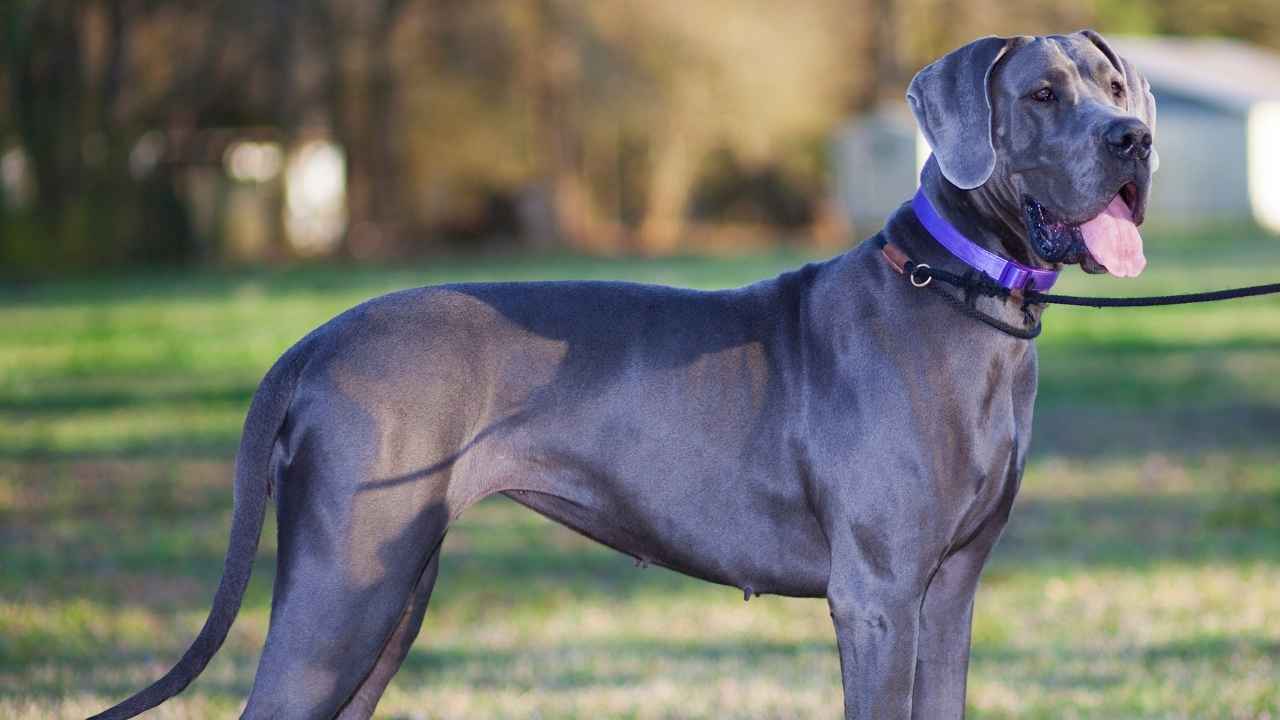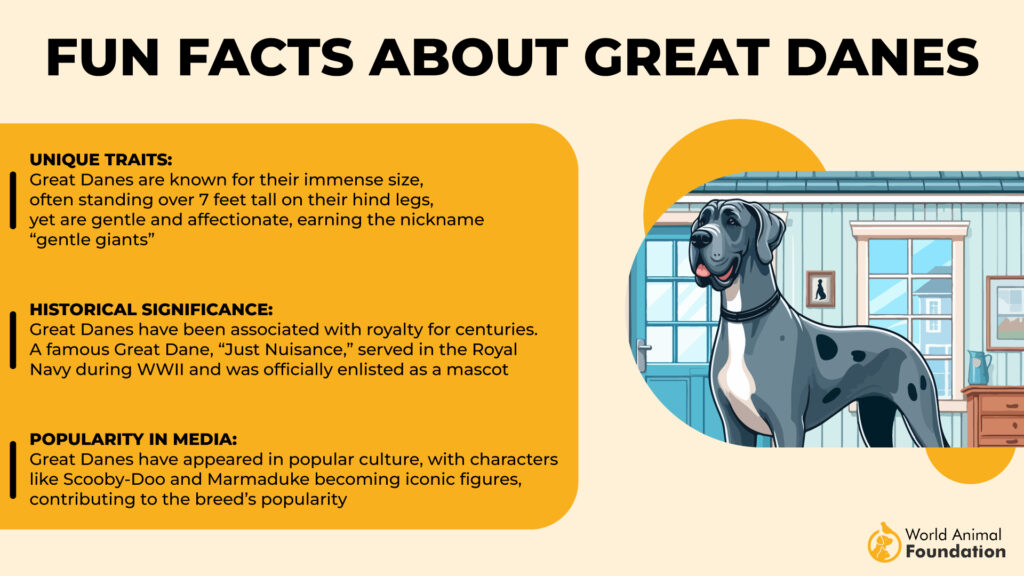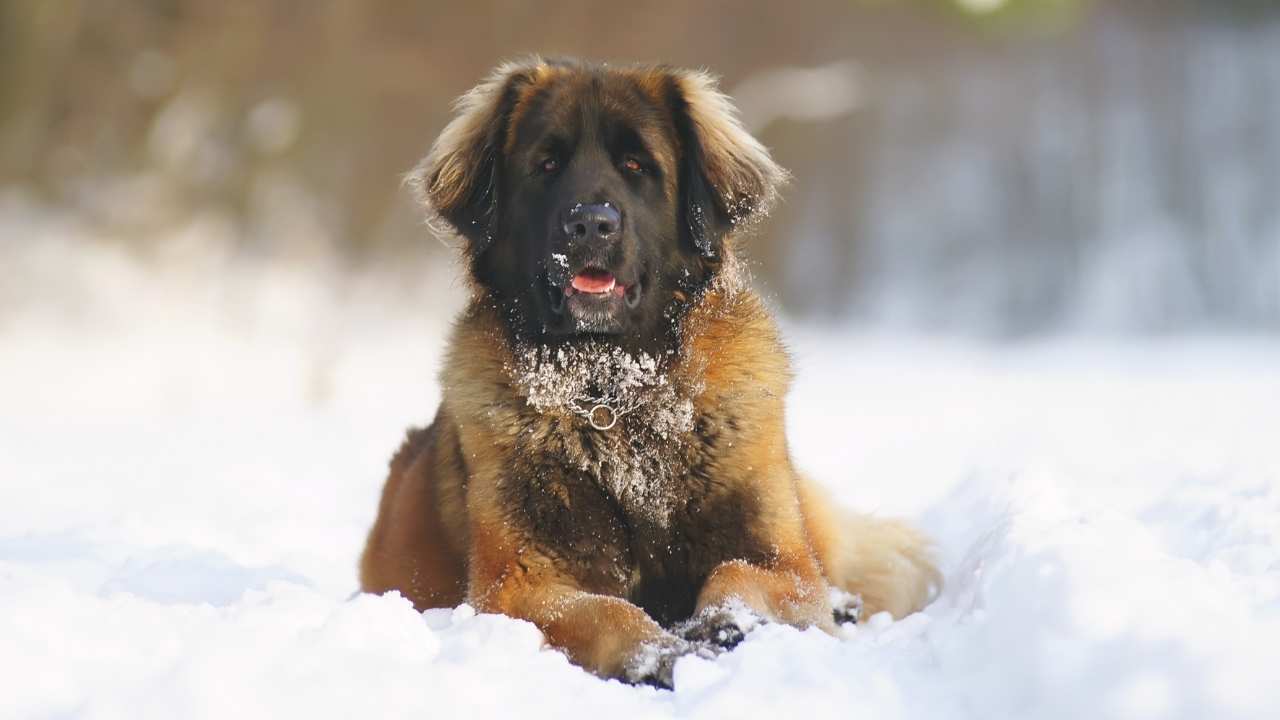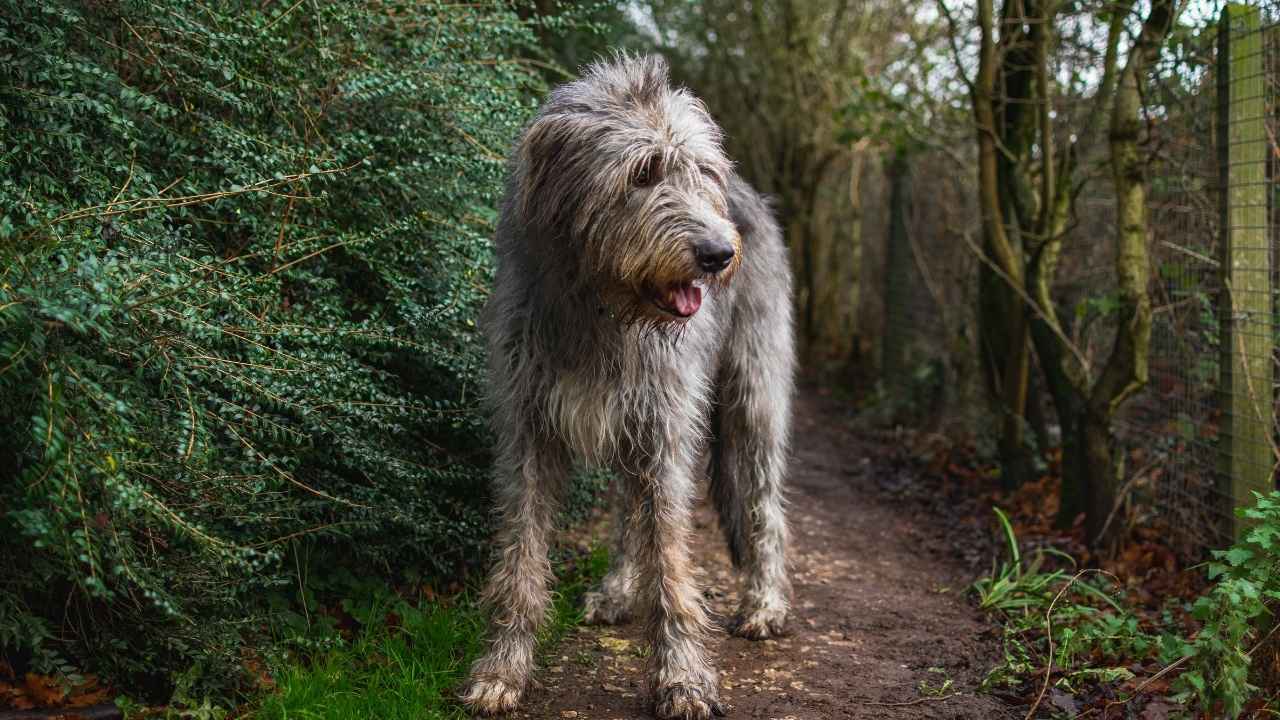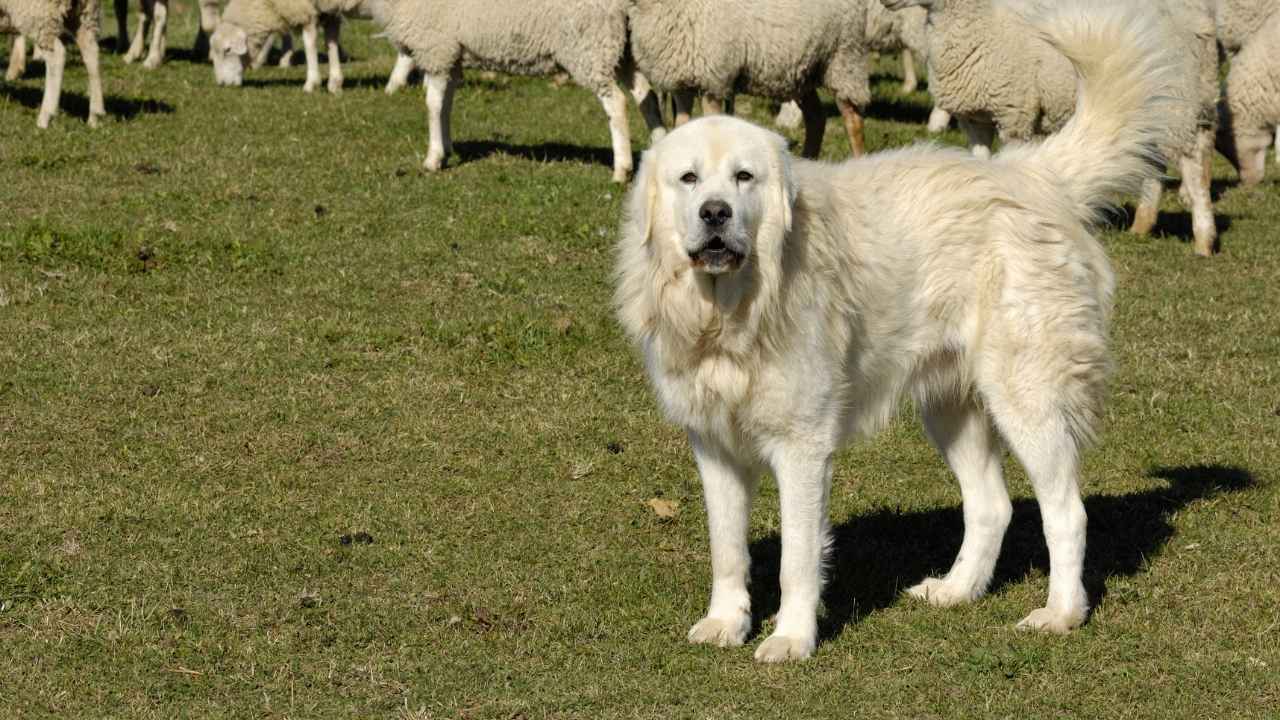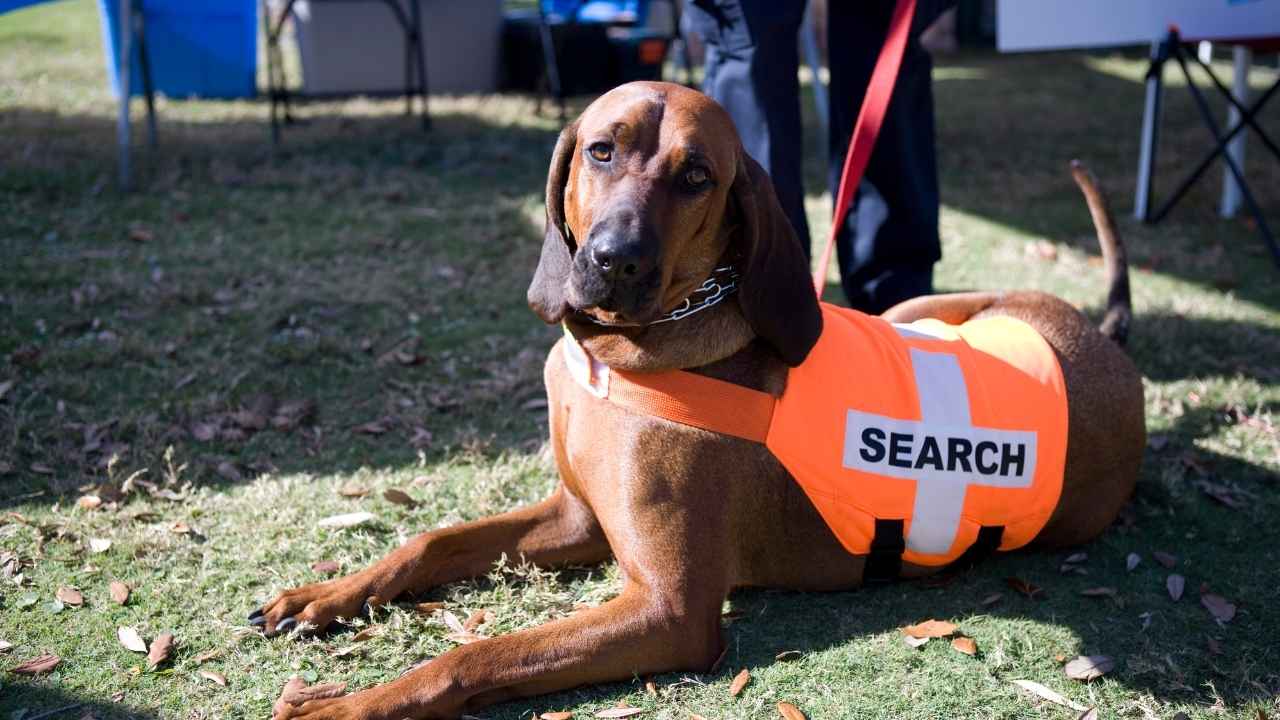Are you looking to expand your furry family but concerned about how your large dog might get along with a smaller companion? Fear not! Many large dog breeds possess gentle, friendly, and adaptable natures, making them excellent companions for small dogs. In this guide, we’ll explore the seven best large dog breeds known for their harmonious relationships with smaller canine pals. From the patient and protective Great Dane to the sociable and gentle Golden Retriever, discover which giant breeds can form lasting friendships with their pint-sized counterparts, ensuring a happy and balanced home environment for everyone.
Ever seen a Tiny Dog try to boss around a 150-pound dog? It’s like watching Shaquille O’Neal take orders from a toddler. But guess what? It happens more often than you’d think!
The myth that big dogs eat small dogs is about as accurate as believing all cats hate water. Sure, size matters, but what counts is temperament. Some large breeds are naturally gentle, patient, and nurturing toward their tiny housemates.
A surprising fact? Studies show that opposite-sized dogs often form the strongest bonds—kind of like unlikely best friends in a buddy-cop movie. The big one provides security, while the little one brings the attitude.
So, if you’ve been hesitating to introduce a big dog into your small-dog household, take a deep breath. With the right approach, even the most mismatched duos can become inseparable best friends. Just supervise their first meeting—no one wants an accidental game of fetch with the wrong “toy”!
7 Large Dog Breeds That Get Along With Small Dogs
1. Saint Bernard
|
Height: 25-30 inches |
||
|
Weight: 120-180 lbs |
Gentle, affectionate, loves other pets |
Highly trainable but needs consistency |
First off, if you’ve ever wanted a dog that doubles as a fluffy couch, a Saint Bernard is a great fit. These gentle giants are massive, but their energy level is surprisingly low. They get along with small dog breeds like a loving older sibling—except one that drools on your shoes.
More importantly, Saint Bernards aren’t big on chasing other animals, so your chihuahua or Shih Tzu is safe from impromptu wrestling matches. However, because of their sheer size, they can easily kill a tiny dog by accident if playtime gets too rowdy.
With proper training and early socialization, Saint Bernards learn to navigate their bulk carefully. Make sure to start at a young age so they understand the difference between a playmate and a plush toy.
Saint Bernards are best for dog owners with space—a tiny apartment plus a giant dog equals a chaotic game of “Where do I sit?” A yard is ideal, but they’re happy lounging inside as long as they have their pack close by.
2. Newfoundland
|
Height: 26-28 inches |
||
|
Weight: 100-150 lbs |
Protective, loving, great with other dogs |
Very trainable but stubborn |
If a big dog could be voted Most Likely to Babysit, the Newfoundland would win by a landslide. These affectionate water dogs are known for their protective nature and love other dogs, including small breeds like a dachshund or Boston terrier.
While their prey drive is low, their protection instinct is high, meaning they’ll guard their household like a fluffy security officer. That said, they’re gentle and would rather hug a small dog than chase it. Their only downside? They shed like it’s their life’s mission.
AKC mentions that they need proper training to ensure they don’t accidentally knock over a little dog (or a person, or your entire dining table). Leash training is crucial unless you want a 150-pound dog dragging you down the street.
Newfoundlands is a great dog for families with kids, other pets, and lots of love to give. Just be prepared for a lifetime of wet floors (they drool like they’re in a food-eating contest).
3. Great Dane
|
Height: 28-34 inches |
||
|
Weight: 110-175 lbs |
Goofy, loyal, affectionate |
Very trainable but requires patience |
Imagine a Siberian husky but bigger, clumsier, and convinced they’re a lap dog—that’s a Great Dane. Despite their intimidating size, they are one of the friendliest large breeds and enjoy socializing with other small dogs like a beagle or even a cat.
Great Danes don’t have a strong prey drive, but their zoomies can be serious injury risks to small animals that don’t move fast enough. They mean well, but a single playful chase can send a chihuahua flying like a frisbee.
Since they’re active but not overly energetic, they need moderate exercise but lots of training. Their personality is affectionate but stubborn, so expect some creative problem-solving when teaching commands warns Hillspet.
A Great Dane is a good fit for dog owners who want a gentle but goofy giant that plays well with other pets. Just be ready to give up half your bed (and your dignity when they steal your food off the counter).
4. Leonberger
|
Height: 25-31 inches |
||
|
Weight: 90-170 lbs |
Calm, intelligent, very social |
Highly trainable but needs leadership |
A Leonberger is what happens when a Rottweiler and a lion have a cute yet dignified love child. They’re massive but gentle, making them great dogs for homes with other small dogs. Plus, they love being part of a family—the dog follows you to the bathroom like a furry shadow.
Unlike some large breeds, they’re easily trained and naturally well-behaved. Their energy level is moderate, and they love a good walk, but they’re not about to turn into a Siberian husky and start pulling sleds.
PetMD recommends that early socialization helps them get along with other pets, so introducing a small breed like a Boston terrier or Shih Tzu from a young age ensures lifelong harmony. However, they need firm training—otherwise, they’ll run the house like they own it.
Leonbergers are best for owners who want a regal yet goofy dog that plays nice with other animals. Just know that their fur collects enough toys, dirt, and debris to build a second dog.
5. Irish Wolfhound
|
Height: 30-35 inches |
||
|
Weight: 105-180 lbs |
Gentle, dignified, laid-back |
Easygoing but requires patience |
A gentle giant with a heart of gold, the Irish Wolfhound is as friendly as they are tall. These towering dogs are incredibly patient, making them great dogs for households with small and large dogs alike. Despite their intimidating size, they are not aggressive and love being part of a family.
They don’t have a strong prey drive, but they do tend to explore, so a secure yard or strong lead during walks is necessary. Early socialization helps them bond with other pets, ensuring they remain calm and friendly.
WebMD claims that though highly intelligent, Irish Wolfhounds can be independent thinkers, so proper training is a must. They respond well to positive reinforcement, but dog owners should be patient.
These dogs are best for people who appreciate a loyal, gentle companion who won’t hesitate to nap in the middle of the house like a giant, furry rug. Just be prepared for everyone in the neighborhood to stop and admire your next dog!
6. Great Pyrenees
|
Height: 25-32 inches |
Independent, protective, gentle |
Moderate trainability needs patience |
|
Weight: 85-160 lbs |
The Great Pyrenees is like a fluffy mountain guardian that’s always on duty. These gentle giants are fiercely protective but calm, making them great for families with small and large dogs alike. They’re naturally affectionate but have an independent streak, so don’t expect constant cuddles.
Despite their size, their prey drive is low, and they’d rather guard the house than chase a small dog. However, their protective nature means early socialization is a must—otherwise, they may see every stranger as a threat.
Training a Great Pyrenees requires patience, as they prefer to think for themselves. Use firm but positive reinforcement, and don’t let their stubborn side win.
These dogs are best for owners who need a loyal protector that plays well with other pets. Just be ready for a LOT of fur—grooming is practically a full-time job!
7. Bloodhound
|
Height: 23-27 inches |
Laid-back, curious, affectionate |
Trainable but stubborn |
|
Weight: 80-110 lbs |
A Bloodhound is a detective wrapped in a droopy, lovable package. These gentle giants are famous for their incredible noses, and if they catch a scent, they hope you’re ready for an adventure. They’re affectionate with other dogs and love being part of a pack, making them a great choice for homes with small and large dogs alike.
Despite their laid-back demeanor, Bloodhounds have an independent streak that makes training an exercise in patience. They’re trainable, but they prefer to follow their nose instead of commands, so early socialization and consistent training are key.
Bloodhounds aren’t big on aggression, but their strong sense of smell means they love to explore. A secure yard and a firm lead during walks are essential unless you want to be dragged off on an impromptu tracking mission.
These dogs are best for owners who appreciate a friendly, sometimes stubborn companion who gets along with other animals. Just be prepared for epic grooming sessions—their floppy ears and loose skin collect more dirt than you thought possible!
Tips for Introducing a Big Dog to a Small Dog Without Causing Chaos
-
Start slow: Let them sniff each other from a safe distance before face-to-face meetings.
-
Supervise interactions: Always monitor their first few encounters to prevent accidental rough play.
-
Use positive reinforcement: Reward calm and friendly behavior with treats and praise.
-
Separate feeding areas: Food aggression can be an issue, so give them their bowls.
-
Train both dogs: Teach basic commands like “sit” and “leave it” to establish boundaries.
-
Give the small dog a safe space: Provide a retreat area where the small dog can escape if needed.
-
Avoid forced interactions: Let them build a bond naturally at their own pace.
-
Consider personality, not just size: Some large breeds are naturally gentle, while some small breeds can be bossy!
With the right approach, your big dog and small dog can become the best of friends—just as long as the little one doesn’t try to boss the giant around too much!
Conclusion
Large and small dog friendships are like buddy-cop movies—unexpected but amazing. Whether you’re welcoming a new dog into your home or helping your puppy find a friend, big dogs can be the best gentle giants around. Just be mindful of their traits and personalities.
Even breeds not mentioned in detail, like the American Bulldog and standard Poodle, and females of various large breeds, have proven to get along with smaller companions. With proper training, early socialization, and mom-like patience, you can create a harmonious home.
Age plays a role too! A Great Dane in old age may be more accepting of a tiny Beagle, while a young Bloodhound might want to play a little too roughly. Knowing your dog’s energy level helps prevent unnecessary fights.
Ultimately, whether you have a Saint Bernard or a Leonberger, love and guidance make all the difference. Just ensure your small dog doesn’t become their favorite chew toy!
In conclusion, selecting a large dog breed that gets along well with small dogs can foster a harmonious and joyful multi-dog household. The seven breeds highlighted, including the Golden Retriever, Labrador Retriever, and Great Dane, are renowned for their gentle nature, sociability, and adaptability. Each of these breeds offers unique traits that contribute to a peaceful coexistence with smaller canine companions. When considering a large dog, it is essential to assess individual personalities, provide proper training, and ensure a positive environment, enabling both large and small dogs to thrive together and form enduring friendships.

